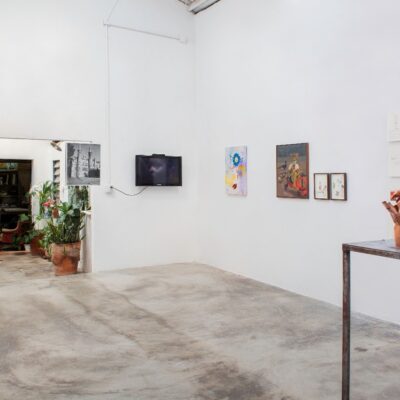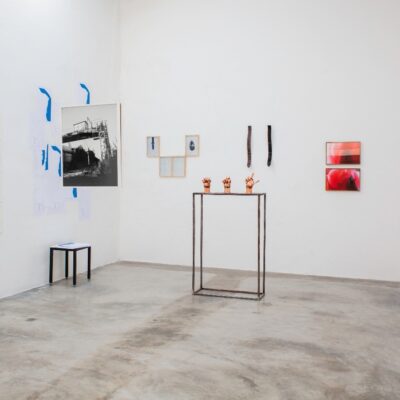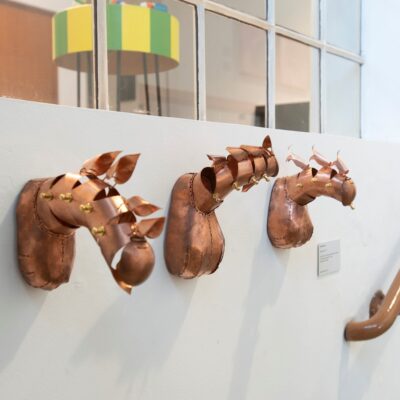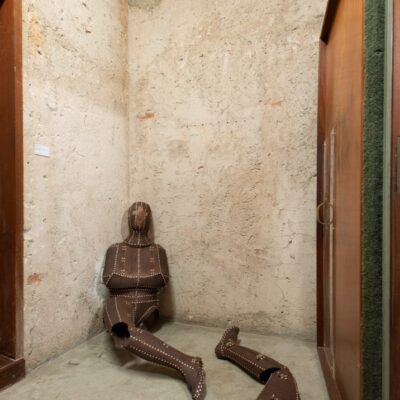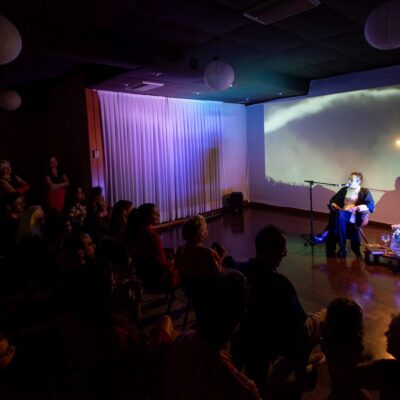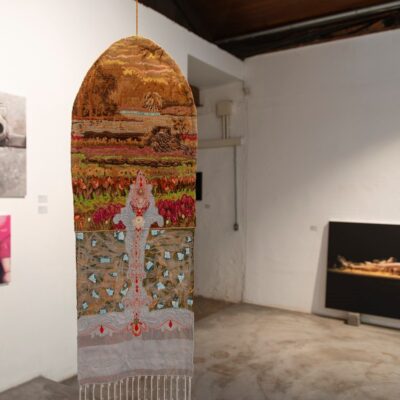“The Great Circus of Patriarchy” or too stubborn to quit making feminist projects, when feminism went out of fashion
Author: Dra. Talita Trizoli – IEB-USP (FAPESP Grant)
Between 2015, the year of the so-called Brazilian “feminist spring”, and the current 2023, a series of changes occurred in the Brazilian artistic system with regard to feminist guidelines. From the youthful enthusiasm of a generation of young artists that discovered the singularities of the production and trajectory of women artists, as well as their peculiarities in negotiating with the system, it moved on to a media presence and institutional infiltration, albeit punctual, of a certain iconography and feminist issues, together with a new flow of publications, formation of groups, collectives and projects in the various aspects of feminism in an intersectional perspective.
It turns out that in this eight-year period, we also had a change of government from a coup d’état, with the rise of an ultra-conservative, fascist and neoliberal government program, together with a global pandemic that destabilized everyday life and the economy. Such aspects affected the cultural area and women’s experience more intensely, either by the suspension of financial support, or by the revoking of women’s basic rights.
In the midst of this intense flow of changes and rise in conservatism, the presence of the feminist acronym observably cooled in several institutional projects, in addition to a retreat of some pivotal figures who previously were more involved with the guidelines, and consequently, a lack of interest on the part of the specialized media in the still insistent feminist projects.
It is from this perspective of political insistence that I comment here about the materialization in the exhibition format of a feminist project with already three years old. In mid-2021, I started coordinating a Feminist Follow-up Group for Female Artists, the G.A.F. More than 40 female artists, from different formal languages, places of performance, trajectory and poetic resourcefulness, passed through it, and even with the fluctuation movement in the participation of the projects, it was possible to work on the uniqueness of each of the trajectories, as well as to establish provocations related to feminist issues.
After a period of readings, conversations, and brainstorming, a group of twelve members who showed greater maturity in research allowed the elaboration of exhibitions proposals, in order to prospect the group and its members. Thus, the first project was a pocket-show at the Massapê, a space in São Paulo, which is an area of artists’ studios and with an exhibition space located in the neighborhood of Sta. Cecília, a current location of youthful bohemia in the center of the city.
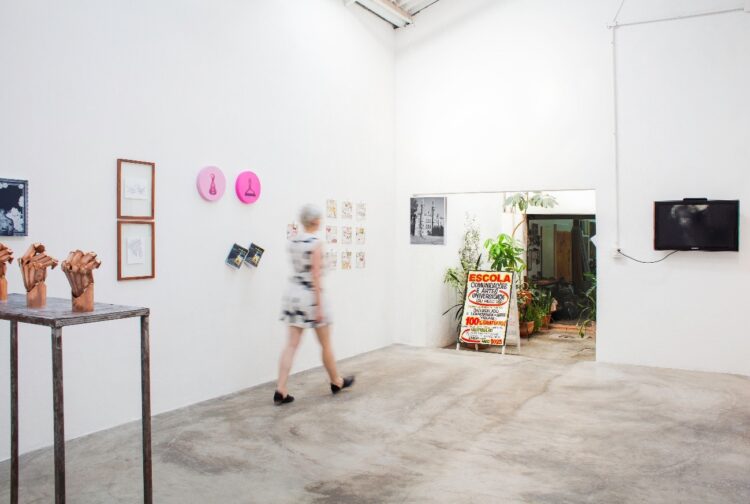
View of the exhibition “G.A.F. W/O Demands”. Photo by Paula Faraco
The exhibition was open for only one week (03/04 to 03/11), and was named “G.A.F. W/O Demands”. It was organized from a selection of already existing works by artists Dyana Santos, Guillermina Bustos, Leticia Ranzani, Ludmilla Ramalho, Natali Tubenchlak, Nita Monteiro, Paula Faraco, Renata Egreja, Rikia Amaral, Rosa Bunchaft, Taty Arruda and Thatiana Cardoso, some produced even before the participation on the group. The pieces dealt in different intensities with issues such as the invisibilization of domestic work, maternity, gender violence, formation of subjectivity, desires and relationship with the public space. Despite being a fairly short exhibition, there was a good flow of visitors, and even some attention from the specialized media.
- View of the exhibition “G.A.F. W/O Demands”. Photo by Paula Faraco
- View of the exhibition “G.A.F. W/O Demands”. Photo by Paula Faraco
From this first experience in which the curatorial scope was organized via the selection of pieces that were related to the classic feminist themes, we organized a larger project and with more opened days, in this case, the exhibition “The Grand Circus of the Patriarchy”, which was open from 06/03 to 06/20, at the Canteiro space in São Paulo, also a collective of studios for independent artists with a space for exhibitions.
Also located in a neighborhood of São Paulo with a bohemian flow, Vila Madalena, the Canteiro space was previously a music recording studio known in the music world, the YB studio; therefore, its space had specific characteristics of use, different from Massapê, which was a white cube prototype.

View of the exhibition “The Grand Circus of the Patriarchy”. Photography by Ivan Padovani
In addition to the challenge of occupying this very specific space, there was also the need for care in the narrative path of the exhibition, since it arose from a “homework” assignment for the artists, which was to talk about masculinities. The choice of this theme occurred after my perception as a teacher-curator that the artists were quite used to working with themes and materials linked to the spectrum of femininity, which often resulted in derivative or redundant works. Wanting to move them out of this comfort zone, I asked them to start looking at their Other par excellence, in this case, Men (since all members are CIS women). After a certain state of panic and resistance, we began critical readings, conversations with male artists and researchers on the subject, a period in which the works began to take shape.

View of the exhibition “The Grand Circus of the Patriarchy”. Photography by Ivan Padovani
The set of pieces resulting from this experience consisted of works where humor was a predominant energy, something justifiable as a common strategy for approaching difficult, complex and tense themes for some individuals. Even with pieces of critical content, the use of ridicule metaphors, parodies and jokes was predominant, whether in pieces with an explicit phallic presence, or in works that mention cultural symbols of masculinities.
The show featured the same artists from the previous exhibition, 12 in total, and this time there were more than 50 works in the most varied languages (photography, painting, object, sculpture, drawing, installation, performance, video, embroidery).
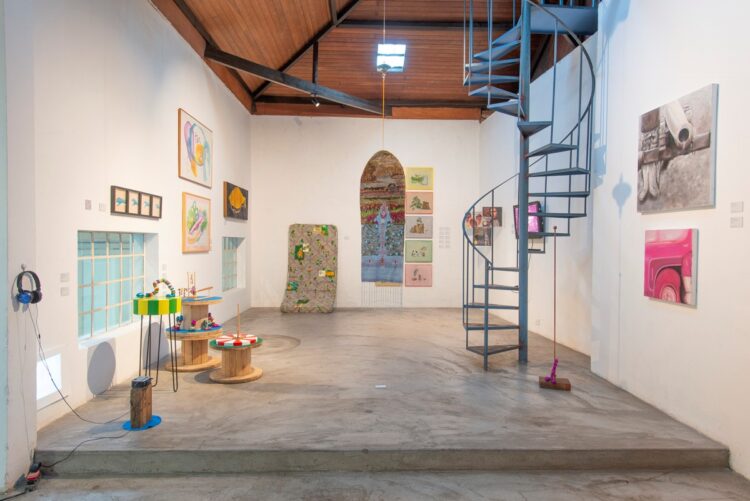
View of the exhibition “The Grand Circus of the Patriarchy”. Photography by Ivan Padovani
Dyana Santos, for example, a young sculptor from Minas Gerais, presented works in which the dimension of male threat and patriarchal values weigh on women. The male chastity belts that open the exhibition, “Cacophony”, show both the possibility of containing male desire and its condition as a threat, after all, their exterior has sharp edges. The copper sheet armor “Opium of the people” has her body as an anatomical model, and refers to the norms of gender and race that limit subjectivity. As a result of this work, the artist performed a photo performance, “Arena”, in which she interacts with the piece in a mixture of burden and fury.
- View of the exhibition “The Grand Circus of the Patriarchy”. Detail with “Cacophony” from Dyana dos Santos. Photography by Ivan Padovani
- View of the exhibition “The Grand Circus of the Patriarchy”. Detail wih “Opium of the people” from Dyana dos Santos. Photography by Ivan Padovani
Going up the stairs, the old mirror in the recording room directs the viewer’s gaze towards the two pink photographs of Thatiana Cardoso, an artist residing in São Bernardo, a city neighboring São Paulo. An investigator obsessed with strategies of everyday macho violence, Cardoso has a long project of collecting household items in pink, rose and other shades linked to the stereotype of femininity. Between installations and pictorial themes, such objects also serve as photographic experiments in which the artist’s abstracting frame de-characterizes their industrial function, and reallocates them in an erotic setting. The two photographs, “Fight Back” and “Without consent” consist of a sub-series, never exhibited by the artist, in which she reflects on the practice of grooming, and the experience of her father, who was an abusive and violent man – in this aspect, the pink of the objects completely loses its sweetness, and appears abject. This perceptive chromatic displacement used by Cardoso also occurs in the two monochromatic paintings presented, “Pray for Safety” and “Kind and humble with ”, which are fragments of images captured from the internet of profiles of love scammers, another theme of artist’s research, which deals with narratives of amorous illusion and its harmful dimension in female life.
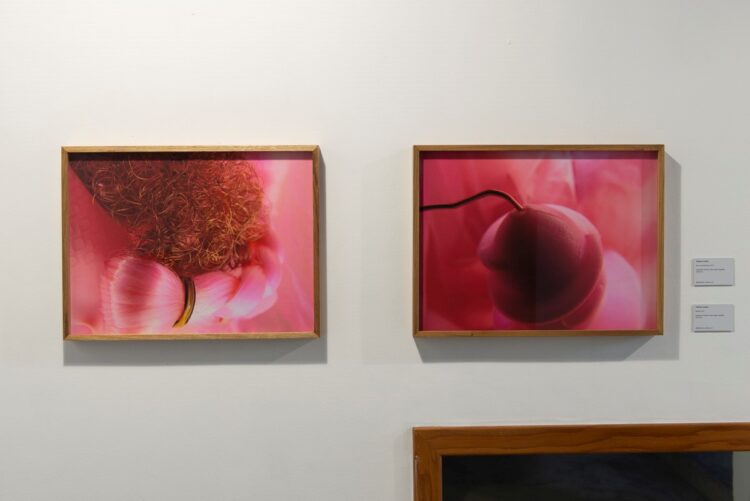
View of the exhibition “The Grand Circus of the Patriarchy”. Detail with “Fight Back” and “Without consent” from Thatiana Cardoso. Photography by Ivan Padovani
The great photoperformance picture of the artist from Minas Gerais, Ludmilla Ramalho, also triggers this dimension of masculine violence. Named “Fuck Her”, Ramalho is lying naked and covered in bird feed, with several chicks feeding on her body, hurting her during the event, and highlighting the dual relationship of desire and revulsion to these male entities – it is important to note that in Portuguese, the word Pinto means a baby chicken as well as being slang for the male sexual organ. Ramalho always seems to play with polarizations in her work, especially if we consider the photograph “Orlando”, a fragment of the play/performance performed by the artist at the vernissage, in which the iconic character of Virginia Woolf is revisited in the light of recent theories of gender and feminism.
- View of the exhibition “The Grand Circus of the Patriarchy”. Detail with “Orlando” from Ludmilla Ramalho. Photography by Ivan Padovani
- View of the exhibition “The Grand Circus of the Patriarchy”. Detail with “Pray for Safety” and “Kind and humble with a good hear” from Thatiana Cardoso, “woodpecker” from Natali Tubenchlak, “Fuck Her” from Ludmilla Ramalho. Photography by Ivan Padovani
Intending to understand these fragile, flawed, cracked masculinities, several of the artists used research methodologies to produce the works. Paula Faraco, for example, a photographer residing between São Paulo and Rio de Janeiro, was one of them. The artist carried out a brief questionnaire to be answered by her male friends. From the serious and funny answers, Faraco made a list of ten pieces of advice, which are read by an actor in the tone of “loving advice to young males”. The sound installation named “10 commandments” complements both the photograph “Founding’s”, a photograph of Faraco on a residential street in São Paulo, which consists of a pair of men’s jeans thrown/hanging on the edge of a wastebasket – a simple commentary on the limitations of current models of masculinity. Still in a parodical tone, Faraco also presented a photographic montage of the Fauno Barberini and a nuclear explosion, together with four small pieces of white marble with laser incisions of air attack scenes and military weapons, elements that make up the language of masculinity in his contradictions, “The power, the beauty, the destruction”.

“The power, the beauty, the destruction” from Paula Faraco
The willingness to violence that the patriarchy regime perpetuates via the feeding of toxic behaviors in masculinity materialized it in this exhibition not only in the sexual and warlike sphere, but also in the legal sphere. Rosa Bunchaft, artist residing between Rio de Janeiro and São Paulo, but born in Bahia, after five years without any artistic practice, resumed her practice with the set of cyanotypes “Winter Garden”. The work consists of a set of photographs of her youngest son, veiled by blue stains, and which was the subject of a legal dispute with her ex-husband, who used the most diverse and perverse ways in an attempt to disqualify her motherhood. The process dragged on for years, and now ended in 2023 with the right to custody guaranteed to the mother. At the end of that legal winter, Bunchaft evokes the path of emotional exhaustion with a photograph of the corridor of the Family Court of Pinheiros, where part of the process developed.
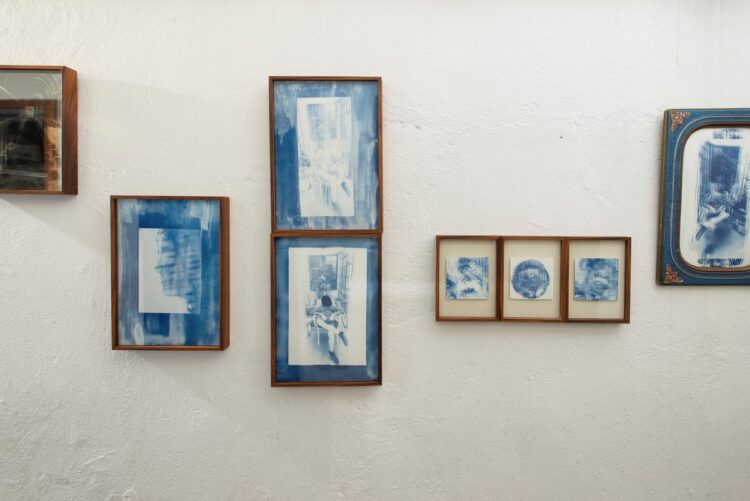
“Winter Garden” from Rosa Bunchaft. Photography by Ivan Padovani
The signs of violence in masculinity are also evoked by Taty Arruda, artist residing in Rio de Janeiro. The set of ten paintings, “Revealed Systems” make use on the language of illustrations on literacy books, presenting pop compositions, but which ridicule the dictates of the signs and rites of becoming man. There are bookends in the shape of weapons, fruits and decaying phallic plants, toys linked to the stereotype of masculinity as indicators of violence, which demand an attentive eye to discover these discrepancies amidst the banality of still-lives. Even though it is a set, each of the canvases works independently, as anecdotes of the tragedies that the toxic imperatives of patriarchy exercise in the masculine sphere.
On the wall next to Arruda, there is a set of works by the Argentinean artist Guillermina Bustos. Her long-standing research “Analytical Romantic Agency” – dealing with the romanticization of relationships and the harm they cause – looks at the reconfiguration of popular romantic songs, often re-recorded in different languages, but which reflect practices of emotional dependence and abusive behavior. In ‘Kambiaroke” Bustos alters the lyrics of the songs and places them in karaoke videos, where an amateur singer can follow the melody with the critically adjusted lyrics, but also change his voice to the blurry electronic tone used by stalkers for non-identification. The work is perfectly complemented by the artist’s interference in three covers of romantically popular records, “Popular Masculinity” all by male singers with sexist and supposedly romantic songs, but now presented as parodies of this male desire to be a Don Juan.
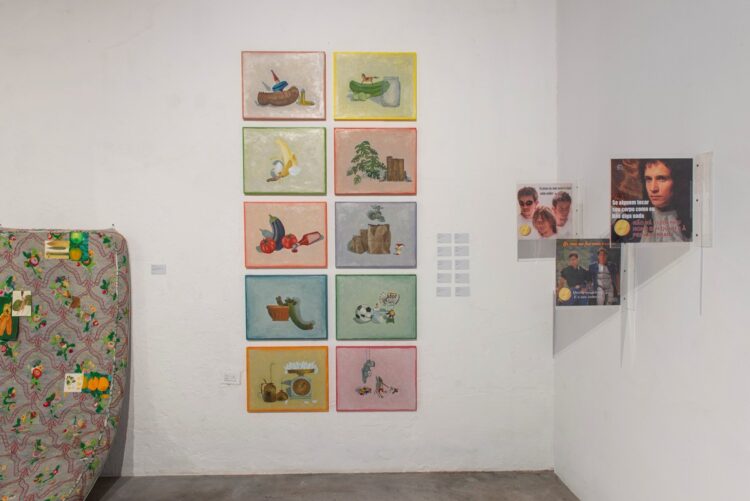
View of the exhibition “The Grand Circus of the Patriarchy”. Detail with “Where is allowed to dream” from Nita Monteiro, “Revealed Systems” from Taty Arruda, “Popular Masculinity” from Guillermina Bustos. Photography by Ivan Padovani
Word play and obscene nomenclature are themes explored by Letícia Ranzani, who lives in São Paulo. An enthusiast of research practices, classification protocols and other regulations in the field of modern science, Ranzani carried out a survey of popular names in Portuguese for penis, considering both the absurdity and the mundaneness of the expressions. Once the list is made, the artist collects the objects referring to these expressions of dubious content from public image banks, and prints them on newsprint, precisely to highlight their fragility, naming the set as “Iconographic Collection of Contemporary Man”.

View of the exhibition “The Grand Circus of the Patriarchy”. Detail with “Iconographic Collection of Contemporary Man” from Letícia Ranzani. Photography by Paula Faraco
When it comes to painting, we should still mention Rikia Amaral and Renata Egreja.
Egreja is a longtime painter, and lives in the city of Ipaussu, in the middle of São Paulo. Her colorful paintings, with a sugary and vibrant palette, revisit different techniques and materials, but without abandoning the pictorial nature of color overlap composition. Flowers, fruits and even landscapes emerge from the canvases in watery and striped grids that make any application of perspective impossible, as the lyrical spaces created by the artist are the dimension of pure chromatic delight. Even with all this formal aspect in her work, Egreja also has training as a doula, and during the conversation and welcoming circles held in her studio on the coast of São Paulo, Ubatuda, she made sketches and notes about the experiences shared there. From this series, we present “”, a watercolor in which the artist engraves the macho phrase heard countless times by her colleagues and by herself, and a smaller watercolor, “Carnival Rift”, which completes the commentary on masculinity with a carnivalesque allegory of a vagina that appears in an androgynous way, swallowing and expanding phallic elements of its structure.
Rikia, on the other hand, lives in Recife, and her production revolves around both essay writings and the comparison of animalia in paintings, drawings and objects. The artist chooses for her works some animals that can be humanized, such as pigs, horses and birds, which in the dimension of alter-egos are capable of sarcastically commenting on the inconsistencies, absurdities and violence of everyday life, most of which are erotic and abject scenes. Within the scope of the bird as a metaphor, she chooses the animal Marreco-pé-na-bunda (Mallard Foot-In-The-Ass), also popularly known as Marreco-rabo-de-espinho (Thorntail Mallard), as a symbol of the failure of the masculine and obsession with the phallus. On the canvas that bears the scientific name of the animal, “Oxyura vittata”, there is an abstraction that oscillates between surrealist references and materialistic lyricism, but which shows the chosen animal hanging himself with his gargantuan penis – the male mallard’s sexual organ can reach 50 cm long, and is a spiral, with a spongy texture and spines, being the largest among invertebrates for exceeding the animal’s measurements.

View of the exhibition “The Grand Circus of the Patriarchy”. Detail with “Have a man’s attitude ”, and “Carnival Rift” from Renata Egreja and “Oxyura vittata” from Rikia Amaral. Photography by Ivan Padovani
The phallic male obsession is also the theme of erotic parodies by Natali Tubenchlak, an artist from Niterói, in the state of Rio de Janeiro. Enthusiastic about toys and using technical reproduction mechanisms, Tubenchlak built several classic children’s toys, linked to a post-World War II generation, prior to the massification and industrialization of play, but replacing some human shapes and figures with penises. The set, which even inspired the title of the exhibition, “Imbroxable, The Great Circus of the Patriarchy”, had its small arenas with miniatures of wooden acrobats, contortionists and climbers, as well as a “woodpecker” in human scale, and gifs performed by the artist with gouaches, musicalized with circus and childhood songs.
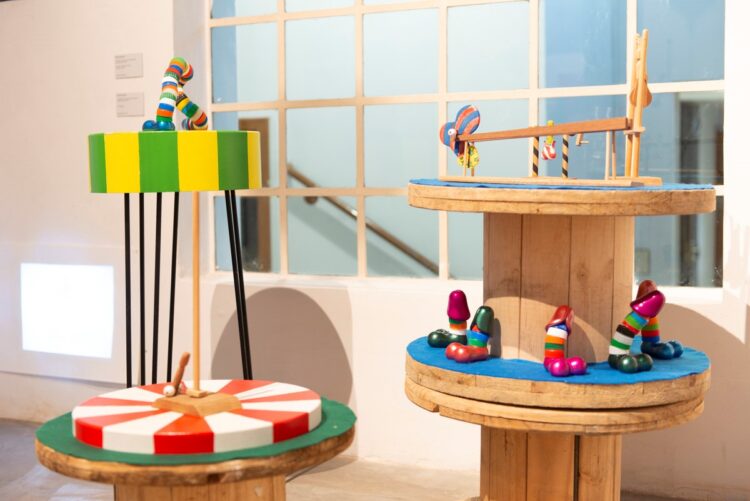
“Imbroxable, The Great Circus of the Patriarchy” from Natali Tubenchlak. Photography by Ivan Padovani
Finally, there is the textile production by Nita Monteiro, an artist residing in São Paulo. With technical excellence in embroidery, Nita’s production is anchored in the appropriation of objects and materials linked to the domestic world that are formally restructured for the artist in pieces that range from textile abstraction to storytelling. For the exhibition, the artist embroidered an old mattress from her adolescence “Where it is allowed to dream”, with materials that emphasize it existing pattern, and with images of fruits that refer to the metaphor of a sexual encounter – the same happening with the piece “The Great Leap”, which is both a comment on the desire to jump out of the patriarchy aquarium, but also alludes to male jouissance as a leap of desire in the amorous encounter.
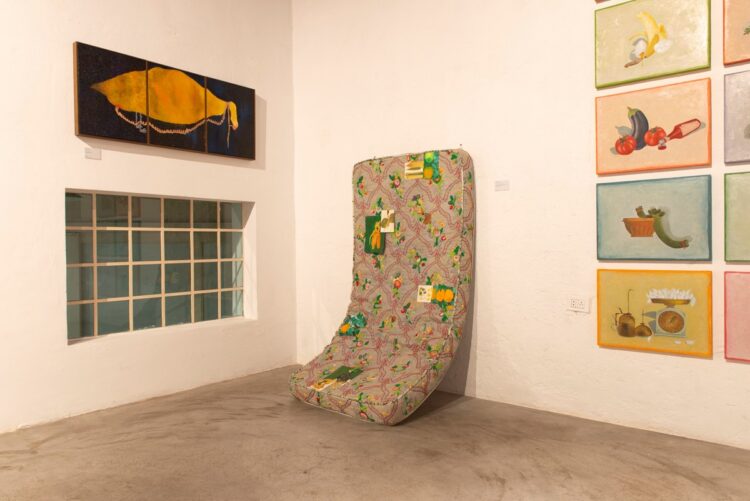
View of the exhibition “The Grand Circus of the Patriarchy”. Detail with “Oxyura vittata” from Rikia Amaral, “Where is allowed to dream” from Nita Monteiro and “Revealed Systems” from Taty Arruda. Photography by Ivan Padovani
At the end of the exhibition, we had another performance, “Counting and others subjective perceptions of effort”, this time in an unprecedented partnership between Thatiana Cardoso and artist Élcio Miazaki, who works with aspects of masculinity based on his dress codes and behavior. In this performance, two young black male actors perform a series of body measurements and clothing gestures that refer to the cadenced gestures of the military, but also of tailors, highlighting the dubious dimension of these touches and their homoerotic potency.

“Counting and others subjective perceptions of effort”, from Thatiana Cardoso and Élcio Miazaki. Fotografia de Elcio Miazaki.
Even with the presentation of more mature works, a considerable flow of visitors, and an activation program via public conversations and performances, the specialized media did not mention such a project on any of their platforms, just as it has ignored too many feminist actions and readings of recent exhibitions in large institutions, thus demonstrating that in the Brazilian context, we have entered a period of feminist stubbornness.

